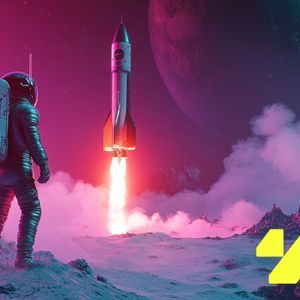Summary BTC mining is a C+ business with poor fundamental economics, making it difficult for miners to achieve profitability despite positive catalysts like BTC price increases. Miners face low margins, high competition, and cyclical industry dynamics, often resulting in negative net incomes and the need for continuous capital infusion. Key differentiators among miners include operational efficiency, HODL strategies, and potential pivots to HPC/AI datacenters, though industry dynamics often overshadow these factors. Investors should be cautious, as miners typically lose money over time, even during BTC bull cycles, due to the industry's poor economics and high operational costs. “When a management with a reputation for brilliance tackles a business with a reputation for poor fundamental economics, it is the reputation of the business that remains intact.” –Warren Buffett The BTC mining industry In my opinion, BTC (BTC-USD) mining is a C+ business and investors should recognize the importance of industry dynamics when investing. BTC miners are often thought of as levered plays on BTC, where, like the tide, the price of BTC lifts or lowers all boats. However, most BTC miners have underperformed BTC in the last year despite several positive catalysts, most important being the increase in the price of BTC. Investors should be cautious and recognize the cyclical nature of the industry is just as important (if not more so) than the qualities of individual companies. And even companies with positive underlying fundamentals usually lose money due to the poor economics of the industry. BTC mining is a straight-forward business where profit is determined by the difference between Bitcoin’s spot price and power and computing costs. For example, if the spot price of BTC is $100,000 and power are computing costs are $70,000, a BTC miner will make $30,000 per BTC. It’s a simple business, but it is not easy. BTC mining is very competitive with low barriers to entry, and despite having low energy costs, miners typically have low margins. For example, none of them made any money last year! Gross margins were positive, but net incomes were negative after including depreciation expense for computers. Because P/E ratios are undefined, EBITDA and CFO multiples are two financial metrics most commonly used for comparison and valuation. EBITDA adds back depreciation expense, which some argue is overstated due to a longer useful life of the computers. However, not replacing miners will eventually result in higher energy costs, so either way, computer costs impact earnings. Cash flow from operations ((CFO)) were also negative– except for a handful of miners. Despite negative CFOs, many miners recycle cash flows into new machines and additional mining capacity to remain competitive. Thus, most miners are running to stand still financially, and investors should question the logic of additional investment. In this article, I use three attributes to differentiate between BTC miners: 1) operational efficiency; 2) whether the miner keeps the BTC it mines or sells it (i.e. a HODL strategy); and 3) whether the miner plans to pivot towards HPC/AI datacenters. Each of these differentiators had positive catalysts last year that caused individual BTC miners to perform well in the short term. However, on the whole BTC miners have underperformed during a bull cycle for BTC. If miners cannot make money during the best of times, it’s certain that they will lose money in the worst of times. A final criticism investors should be aware of is that most miners use stock offerings and convertible bonds to pursue growth at all cost, diluting existing shareholders. So, although the company might have an advantage in the differentiators above (i.e. better profitability, an increase in HODL value, and a pivot to HPC), the equity value of the company will decline because the company continually requires an infusion of new equity to maintain its market position. In conclusion, the economics of BTC mining sort of stinks, and investors should be cautious of the cyclical nature of the industry before investing. Current BTC Bull cycle and positive and negative catalysts: Last year, BTC miners benefitted from multiple positive catalysts that ushered in a new bull cycle. Most important for the bull cycle was an increase in price of BTC. The price of BTC is a positive catalyst for BTC miners for two reasons. First is that it improves margins for the mining business, and second, the price of BTC increases the value of the HODL if the miner holds BTC. As shown in the chart below, the current BTC cycle appears to be progressing similar to previous cycles. Medium.com Source: Where are we in the bitcoin cycle? A second positive catalyst for BTC and miners last year was Trump’s election in November. It is widely expected that Trump’s administration will be positive for the BTC industry with favorable regulations, favorable energy policy, and the potential for a Strategic Bitcoin Reserve ((SBR)). A third catalyst for BTC has been investor demand for BTC ETFs and corporate adoption of BTC as a treasury asset. Most prominent in this area is Michael Saylor and Strategy ( MSTR ) purchasing BTC using convertible debt. A final positive catalyst for BTC miners is the creation of a BTC miner ETF by Grayscale. The Grayscale Bitcoin Miners ETF ( MNRS ) will likely increase investment and interest in the industry. To promote their ETF, Grayscale wrote this summary of the industry . Despite the positive catalysts, most BTC miners have underperformed BTC over the last year. For example, the chart below shows miners' performance through the year when compared to BTC. 1 year returns of BTC and 12 miners (Author calculations) Roughly half the BTC miners posted gains over the last year. However, only Core Scientific, Bitdeer, Hut8, and TeraWulf gained more than BTC, with Iris Energy, and Cipher posting returns similar to BTC. 1 year returns for each BTC miners (Author calculations) Lastly, the chart below shows the hypothetical return of $100 invested in BTC when compared to an index of 12 BTC miners. Although BTC was up about 83% over the past year, the BTC miner index was only up about 50%. Comparison of BTC performance and hypothetical BTC Miner index (Author estimates) It can be argued that the returns above are somewhat arbitrary due to the selection of the 1-year, historical time window (i.e. February 2024 - 2025). However, most miners lost money when looking at their financials over the past year. In general, miners briefly made money in Q1 as the increase in BTC price improved margins. However, the BTC halving in the second quarter was a negative catalyst that decreased revenues and returned miners to negative net incomes. As a result, twelve trailing month earnings appear positive for some miners (MARA, RIOT, and HUT), but I doubt that miners will report positive earnings in 2025 unless BTC continues to rise, further increasing margins. The impact of the halving can also be seen in EBITDA and CFO in Q3, which are negative for all but three miners (CORZ, WULF and BITF). Financials for BTC miners (S&P Capital IQ and Author) A second negative catalyst has been an increase in global hash rates, which have increased 50% from about 550 TH/s to 850 TH/s over the last year. Thus, miners that have not increased their production in proportion to the increase in global has rate will mine less BTC per day. Consequently, miners only make money during these short time windows where the BTC price increases, before global hash rates respond to erode (if not eliminate) temporary profits. It will be interesting to watch revenues and income for Q4 2024 and the price of BTC going forward. Global Hash Rate of BTC network (Blockchain.com) A framework for comparing miners The three attributes I use to differentiate miners are: operational efficiency, the miners’ HODL strategy, and whether it plans to pivot to more stable revenues of HPC. Despite these attributes as a way to evaluate miners, the industry dynamics are likely still more important. As the Warren Buffett quote suggests, an A+ operator in a C+ industry will likely lose. Operational Efficiency For operational efficiency, power cost and computer efficiency are the two most important metrics. However, it is really difficult to rank miners by operational efficiency because there are a variety of metrics, which often indicate contradictory performance among miners. Also, I think there is little differentiation in operational performance because power costs and miner efficiency are somewhat uniform. For power costs, miners have established operations around the world near the cheapest sources of power. Often these are stranded, excess energy resources, such as hydropower, nuclear power, natural gas flared from a fracking, or intermittent wind and solar. A miner might get a good deal of 3-4 cents/kWh for electricity, but there is a natural, lower limit for power costs because power producers have to cover their own capital costs of energy production. Good miners have fixed price power agreements behind the meter, where a bad miner will have variable, ‘front of the meter’ power costs. Second, there is little differentiation for computer efficiency because miners all buy the same computers from the same computer three companies (Bitmain, Canaan, and MicroBT). Although machines might become older and less efficient, most miners upgrade their machines after 2–3 years, and sell the older machines. So a single miner never has a significant advantage for computer efficiency for a substantial period of time. In some ways, miners are like Formula 1 race car teams - they all have the same car design, engine, tires, etc. One team might have a slight advantage for a short period, but the other miners will recognize their advantage and upgrade their machines to eliminate the advantage. Below are three metrics I follow to compare miner’s operational efficiency: BTC miner per exahash; energy efficiency (J/TH) of mining operations; and quarterly mining costs per BTC mined. The table is ranked by market cap, which tends to coincide with the exahash of mining capacity, and thus, the amount of BTC mined per month. Collectively this group of publically traded companies is about $30 billion of market cap, and represents about 31% of the BTC mined on any given day, or roughly 3,900 BTC in December. BTC mined per EH/s and energy efficiency in J/TH are the two best metrics for efficiency. BTC mined per EH/s measures how productive the miner fleet is with each exahash of capacity. Larger numbers are better for this metric, and the best miners report about 18-19 BTC mined per EH. The second is energy efficiency, which measures the amount of energy per unit of computing power. Smaller numbers are better for this metric, with the most efficient miners under 20 J/TH. The final metric is quarterly mining costs for electricity per BTC mined. This metric shows the electrical cost of each BTC mined. Lower cost for each BTC means a miner will have higher gross margins, and likely higher net incomes. Similarly, the final column shows reported energy costs per MWh. The best miners tend to have contracted power between $30-40 MWh (or $0.03-0.04 per kWh). As part of their power agreements, most miners have curtailment obligations, which require miners to decrease their power consumption when demand and power rates increase. As a secondary data point to my numbers below, Anthony Power wrote a great article recently that reconciles capacity, efficiency and power costs across miners. Operational Efficiency metrics (Author from company filings) HODL The second differentiator between BTC miners is whether it keeps the BTC it mines, dubbed a HODL strategy (or hang on for dear life). Due to the price volatility of BTC, some miners historically sold all the BTC it mined to fund operations and report more consistent earnings. Executives of the no HODL strategy are no doubt BTC advocates, but argue that the business of mining and speculation on BTC are two distinct concepts. As they say, ‘If you believe in BTC, buy BTC. But our business is mining, not speculating on the price of BTC.’ Other miners historically sold the bare minimum to fund operations and HODLed the BTC they mined. As a result, historical revenues were lower, but now many of these miners have substantial BTC reserves on the balance sheet. These reserves add leverage, where the market price of BTC adds to or subtracts from the value of the company. Given there will only be 21 million BTC, and that likely 20 million remain due to loss of keys, these HODLs that were established at much lower BTC prices and could potentially exceed the value of the mining operations. As shown in the far-right column, in some cases the mining operations only represent 50% of the value of the company, with the other 50% of the value due to the HODL. To put the HODLs below into context, collectively the group owns about 90,000 BTC. BlackRock BTC ETF owns about 580,000 BTC and Strategy owns about 400,000 BTC, or about 3% and 2% respectively (or 5% in total) of all BTC that will exist. So, the miners are roughly one-quarter the size of the Strategy or BlackRock ETFs, with half of the industry’s HODL owned by Marathon. If the US or some other nation pursues a BTC Reserve and attempts to acquire 500,000 BTC (similar in size to IBIT or MSTR), it will be very difficult to source enough BTC for the reserve without the price of BTC going much higher. In short, miners cannot supply enough BTC from their future mining operations. As mentioned, the miners collectively mine only 3,800 BTC per month. So a BTC reserve of 400,000 BTC would take 100 months to mine, or 9 years of all miners’ production! In my opinion, many BTC miners with HODLs do not currently reflect this upside potential from the price of BTC. As a sub-set of the HODL strategy, some miners also issue convertible debt to purchase BTC in addition to the BTC they mine, implementing a strategy similar to Strategy. HODL Strategy metrics (Author from company filings) HPC Pivot The last differentiator between BTC miners is whether the miner is expanding into high-performance computing (HPC) to leverage their expertise building data centers and power agreements to increase revenues. The advantage of the HPC strategy is that HPC revenues will be more stable, have better margins, and allow for added leverage. Core Scientific set off this trend last summer when it announced a deal to host HPC operations for Core Weave, an AI/ML software developer. The deal has sort of set a high-water mark where Core Scientific will receive $1.5m for each MW of power with 80% margins on the capital invested. TeraWulf was the second company to announce a deal in December 2024. Other miners had hosting operations already (BTDR), or recently acquired data centers ( BTBT ) to enter the HPC space. Riot platforms initially stated they would not host the HPC market, but announced in January that they would pivot to HPC and decrease its energy target for its BTC mining operations. Some people speculate this indicates Riot is close to announcing a deal for its energy assets. Miners that do not intend to pivot to HPC argue that miners lack the financial firepower to compete with tech companies and hyper scalers. For example, the combined market cap of all the miners is $30 billion. Microsoft alone plans to spend $80 billion in capital expenditures in 2025 for AI, or roughly 2.5 times the market cap of the entire miner industry. The Wall Street Journal wrote an article recently that summarized $75 billion in quarterly capex at the tech giants. Also, it is unclear if miners have a unique competitive advantage for hosting compared to other data center operators. Indeed, they have experience building BTC mining facilities, but ultimately most miners plan to offer building shells with power and an internet connection with the customer providing the computers. How exactly is this different than a data center REIT, like Digital Realty Trust (DLR)? (More specified build outs and hosting arrangements are more complex, require server GPU computers, and carry more risk due to computer obsolescence.) HPC Pivot metrics (Author from company filings) Conclusion I hope with this article provided some insight into the industry and provides a warning about some mistakes I’ve made. I first invested in HIVE Digital ( HIVE ) during the BTC bull cycle that began in 2016-2017. It is a small position that I continue to hold. Over this time frame, BTC has increased 50x, rising from $2,000 to $100,000. However, my stock is down 75%! Hive stock performance since 2017 (Yahoo Finance) How is that possible? In theory, the company makes on each BTC that it mines and owns a HODL of BTC. I thought BTC miners were a levered play on the price of BTC? What did I miss? And how can I prevent this from occurring again? I believe the answer is that I failed to understand the basic economics of the industry: that the all in costs to mine a BTC exceed the cost of BTC. I incorrectly assumed that BTC mining would be similar to oil refining and gold mining. In oil refining, profitability is determined by the crack spread, or the difference between oil costs and revenues from refined products, like gasoline. Except for rare time periods like March 2020 when oil prices went negative, refiners are almost guaranteed to make a small profit margin from refining. So, refiners make a small profit over a continual volume of throughput. For gold miners, profitability is usually determined by the all in sustaining costs (AISC) of the mine. Gold miners cannot control the price of gold, and mining is highly capital intensive. So gold miners ensure there is a sufficient buffer between the price of gold and their AISC. Therefore, miners can cut production to maintain profitability if the price of gold declines. So, gold miners make profit based on an estimated volume of production. BTC miners are somewhat a combination of both refiners and gold miners. Net margins are very thin (or negative) similar to refiners. But unlike gold miners, BTC miners cannot control their AISC because of the growth in global hash rate erodes the value of the mine. It’s like a gold mine, where the amount of gold in the ground has a half life and dissipates with time. Miners also believe they grow their way to profitability by improving efficiency and economies of scale. The logic is, “gross margins are good, and we’ll eventually make money if we grow to spread the computational costs out across a wider base of operations.” Growth in global hash rates also requires them to pursue growth, so it seems to make sense. As a result, miners sell each BTC at a loss while trying to make up the loss on volume. This strategy consumes capital from investors who mistakenly believe that miners are a levered play on the price of BTC, and that miners will continue to make money when only at the periods when the economics of mining make sense. BTC miners could perform well if this BTC bull cycle continues. As described above, it really depends on how high the price of BTC goes and whether new investors, that don’t understand the industry, bid up the stocks. But, if or when the cycle ends, miners will likely lose money as the economics of the industry don’t make sense. Time will tell. At the very least, I got a laugh recently when I read that Hive was expanding production … by buying a site from Bitfarms ( BITF ), another BTC miner! Some things never change, I guess.













